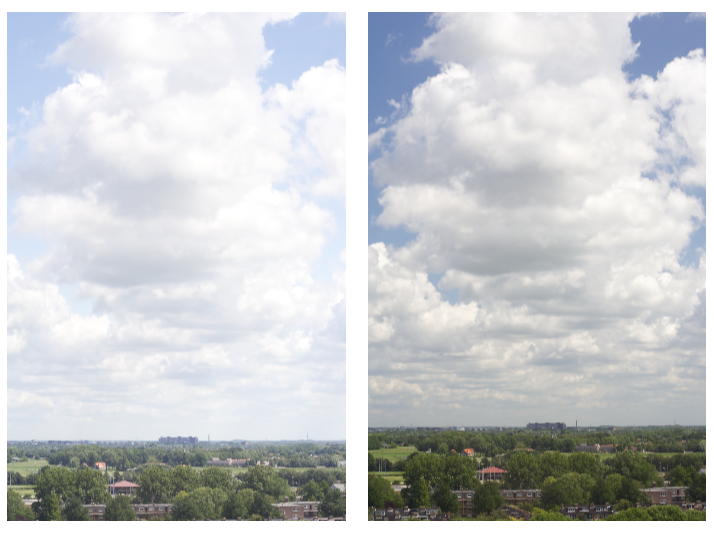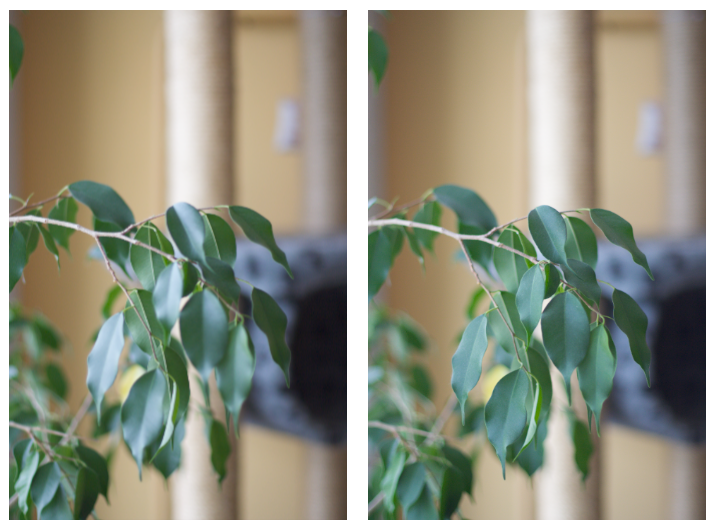Why you want a Polarizer Filter
I recently bought a 50mm lens with a circular polarizer. I though I'd share some quick examples to show what a polarizer filter does for your photo's.
The polarization effect is probably one of the few (if not only) effect which you can not reproduce in photoshop or any other image processing program. Most applications try by increasing saturation, which is nowhere near the effect of a real polarizer.
By rotating the filter, you have the luxury of choosing how much effect you want to have, anywhere between 0% and 100%. The shots below give you an idea what the range of the effect is:
[caption id="attachment_965" align="aligncenter" width="300" caption="Left Minimal polarizer effect. Right: Maximal polarizer effect"] [/caption]
[/caption]
Landscape photographers never leave home without a polarizer. It will render better detail in the clouds, and give better overal colour saturation. When there is a lot of reflection in water, the polarizer should be used with caution. Removing all reflection in favour of a beautiful sky can result in an unrealistic feeling in the shot.
[caption id="attachment_966" align="aligncenter" width="300" caption="Left Minimal polarizer effect. Right: Maximal polarizer effect"] [/caption]
[/caption]
A little less obvious, but a great tip to give your portrait shots an extra edge: When you shoot portraits of people against foliage, use your polarizer to get the highlights out of the foliage. This will make sure the viewer is not distracted from the subject. As bonus, the skin tone of your model will be slightly warmer, making your model look "healthier" :-)
Ofcourse with portraits you don't want to "overdo" it. It's easu to over-saturate the photo, and the polarizer will "eat" one to two stops of light, which will make it harder to keep everything crispy sharp. I think I'd go for the (much cheaper) "magic hour" and a little fill-flash instead of a polarizer, but sometimes there is no choice.
The polarizer I used here is a 58mm circular polarizer from Tiffen, which you can find for just above €40,- new, which is quite a bargain. If your glass has a larger mount, the filters can get pretty expensive (€150 and up), probably because it is harder to get an even polarization effect over a larger piece of glass with light coming in from a wider angle.
A polarizer filter needs to be rotated to get the right effect, so it's nice if the front element of your lens does not rotate during focussing. In the case of the Canon 50mm lenses (th f1.2, the f1.4, and the f1.8), the front element will not rotate. The f1.2 will even not extend during focussing.
Other dramatic examples of shots using polarizers are here, here, here, and here. A nice combo-filter comparison is here. (Links to external sites, get them while they last!)
Linear Polarier A linear polarizer is a single piece of glass which only passes light which is polarized in 1 direction. Reflected light normally tends to polarize parpendicular to the surface it reflected from. So a lake will produce horizontally polarized light, and a window vertically polarized light. You can choose to filter this out bu rotating your linear polarizer.
**Circular Polarizer **Some camera's make use of partial reflection in their metering or focussing systems. Since reflection means polerization, you can get into trouble if there is a linear polarizer in front of your camera. In some orientations, light will not be able to be reflected into the metering system, which renders it useless.
To circumvent this problem, we need to convert the linear polarized light into circular polarized light (hence the name circular polarizer). This is done by adding an extra piece of glass behind the linear polarizer. This extra piece of glass is called a "Quarter Wave Plate" which turns linear polarized light into circular polarized light. This allows your metering system to reflect it as if it were normal light coming into the lens.
The Quarter Wave Plate is expensive to make, and it needs to be neatly glued to the linear polarizer in front of it. That's why circular polarizers are generally more expensive. It is also why linear polarizers are observed to be "more effective", because it's simply a thicker polarizer. The Circular Polarizer needs to have 2 pieces of glass in the same space.
So to sum it up: Linear Polarizer is a single sheet of glass, while a Circular Polarizer is a Linear Polarizer with a Quarter Wave Plate glued to it (Over-simplified ofcourse). The only reason to buy a circular polarizer is because your metering system requires it. This is the case in most DSLRs, but not in many point and shoots.